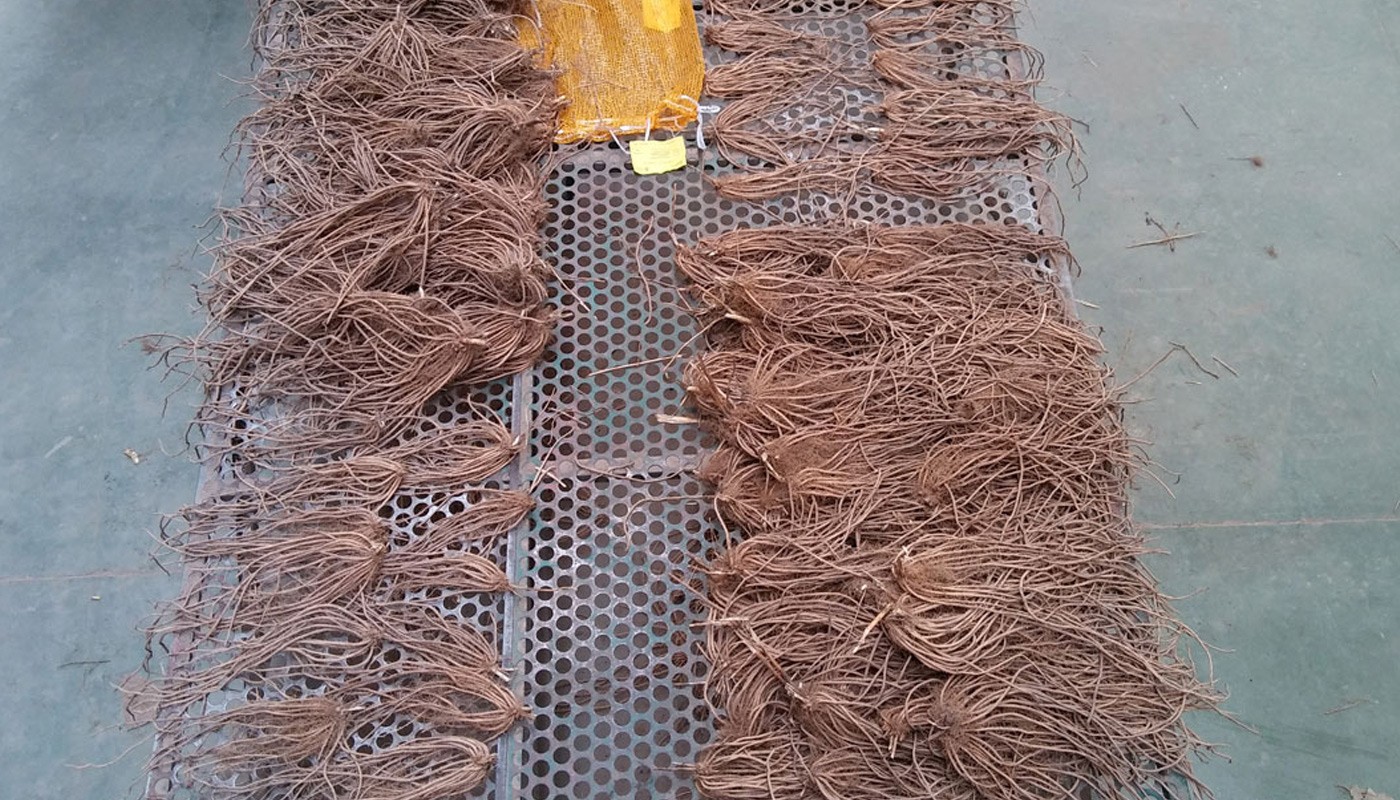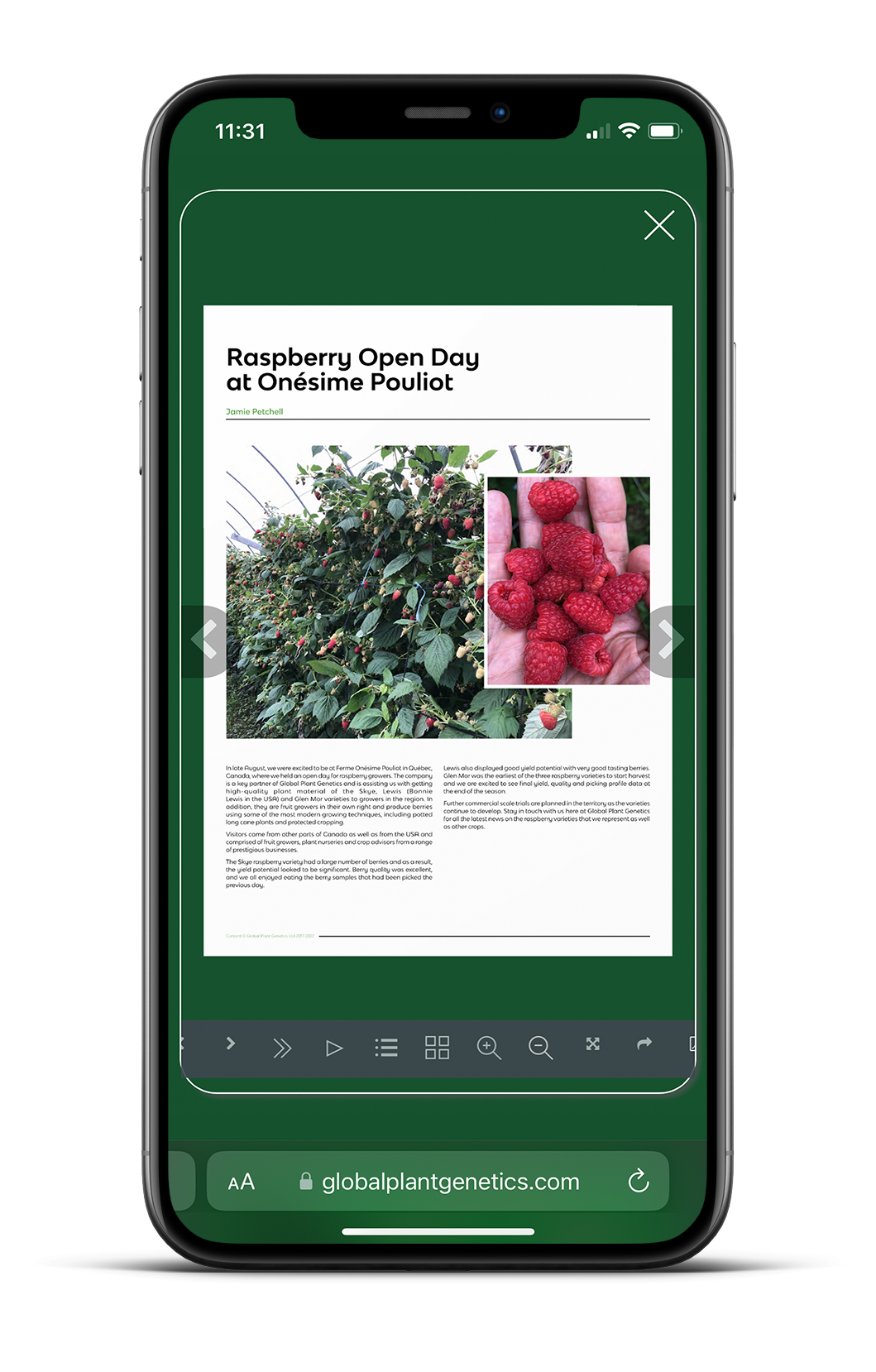Asparagus is a long term investment so it is vital to start out with not only the right varieties, but also with the best plant types for your specific situation. All asparagus plants start their life as seeds and these are grown on further in order to make new asparagus plantations. These days there are three main ways of establishing an asparagus field, as below:
• Asparagus crowns
• Asparagus modules / plugs / transplants
• Asparagus seeds
Asparagus crowns
These are widely used by growers in a range of countries, especially those in cooler and temperate climates. They are usually one year old from seed and allow growers to plant and then often start their harvest after just an additional year. Crowns are produced by nursery companies and graded for size and weight prior to planting in the spring time. They tend be the easiest of the plant types to establish due to the fact that they can be planted early in the spring and have little need for irrigation. One of the downsides cited for the use of asparagus crowns is that when they are harvested from the ground by nursery companies, wounds are created on the surface of the roots that could be a potential source for future infection. As a result, it would be common in a number of countries for crowns to be disinfected post-harvest and prior to planting.
Asparagus modules
This plant type has mostly been common in warm / hot asparagus producing regions of the world. Seeds are sown in cell trays, germinated and then grown on for 8-12 weeks before being planted out in the field. This means that they are younger than crowns and there is a definite need for irrigation to aid in establishment. The first harvest sometimes takes place just one year from planting in warmer regions, whereas in cooler climates, it is necessary to wait an extra year so that plants become well established before picking commences.
Asparagus seeds
In some circumstances, growers are direct drilling seed in order to establish new asparagus plantations. In theory this is the cheapest method as there is no growing on of the plant involved. However it is also the most high risk method, as there is far greater potential for crop loss through poor establishment. This is the least common practice of the three types but has been made a success by a limited number of growers in specific regions across the world.
What is the best plant type for establishment?
How do we answer the question posed in the title of this blog? Well as ever in the production of high value crops, there is not one answer that fits all scenarios. In my personal opinion, I would rule out the direct drilling of seeds in all but the most specific circumstances. This leaves us to compare the merits of crowns and modules.
There is very good sense to use module plants in warmer climates where the time from planting to first harvest is often only one year. There is also very good sense to use asparagus crowns in cooler climates, especially where the availability of irrigation is likely to be an issue.
The biggest area for debate is in temperate climates where irrigation is available. Traditionally we have seen crowns as the most common type of plant material in these situations. However there is now a movement, albeit slow to date, towards the use of modules in temperate climates. There are a number of reasons for this. Firstly the plants do not undergo the same harvest process of crowns that can cause wounding to the flesh of the roots. This means that the plants are often less susceptible to soil-borne diseases than crowns. The cost of the initial plant material is also slightly less as a module than a crown. Further, anecdotal and visual evidence has also shown greater plantation longevity from modules than crowns.
In conclusion, the best plant type for each situation needs to be judged on its individual merits. Important factors are climate, soil type, virgin / re-plant soils, availability of irrigation and grower experience amongst others.
If you have any questions about this blog post, please do not hesitate to get in touch.
Global Plant Genetics delivers Plants, Intellectual Property Management, Joint Venture Business Development Projects, Technical Support and Varietal Solutions Worldwide.
For more information, please contact one of the team as follows:
Jamie Petchell – jamie@globalplantgenetics.com
Rupert Hargreaves – rupert@globalplantgenetics.com

